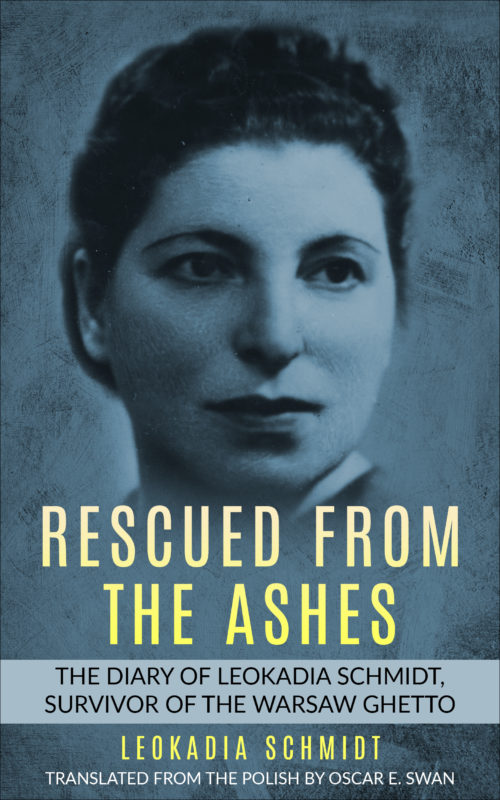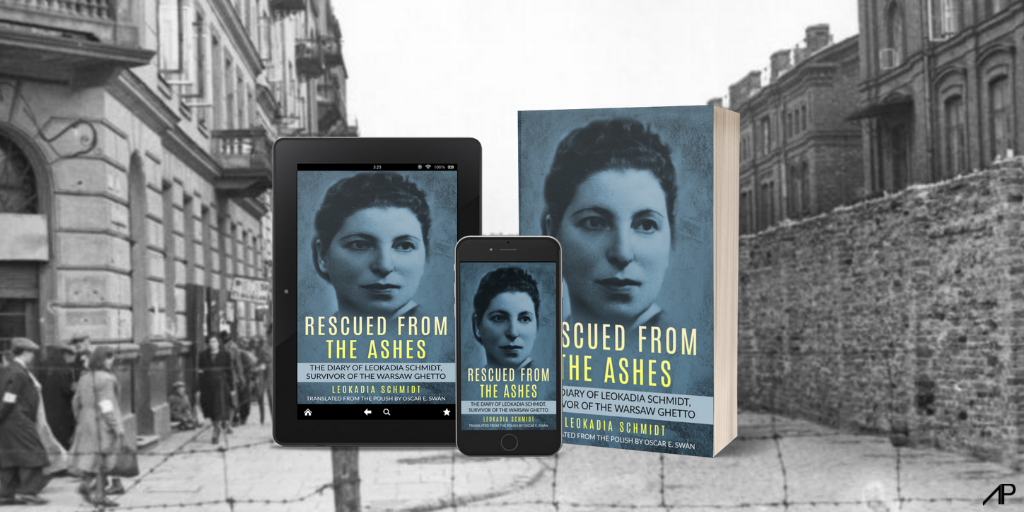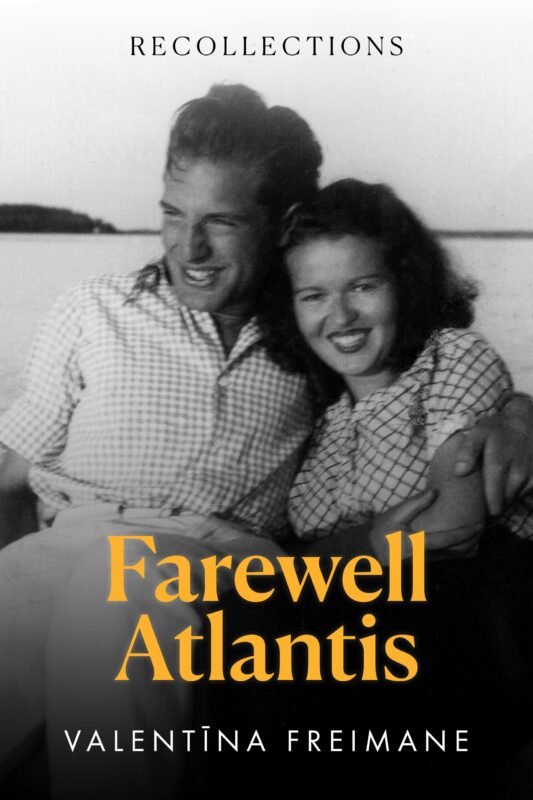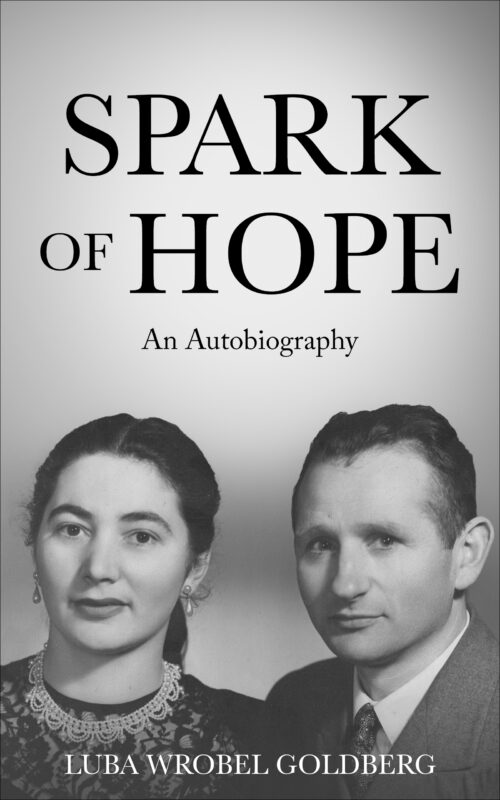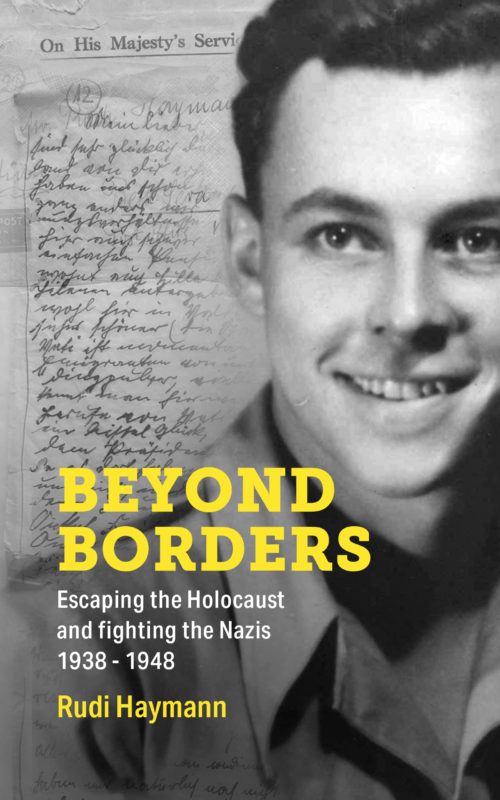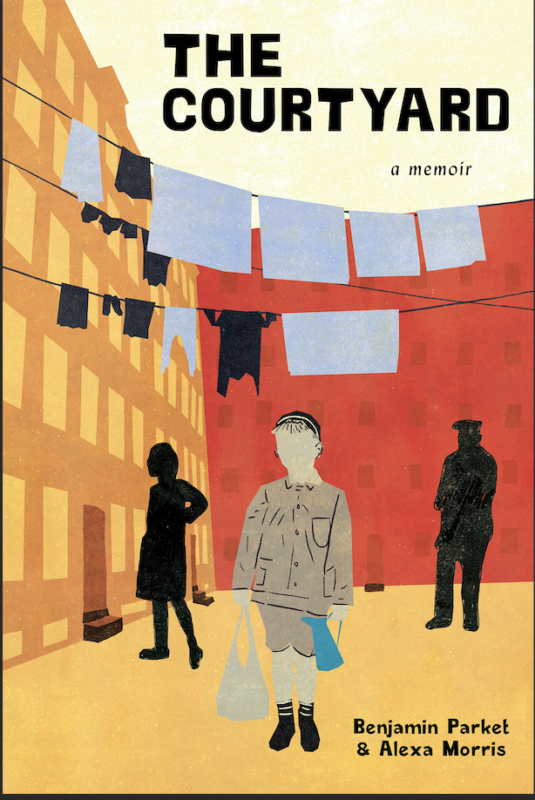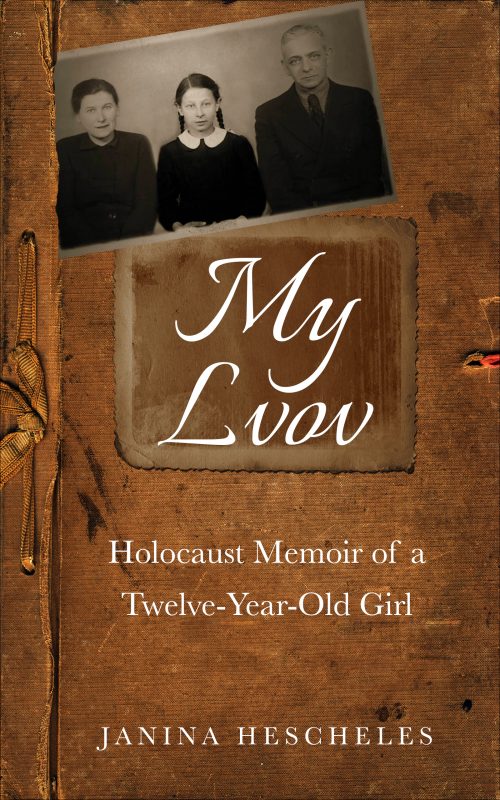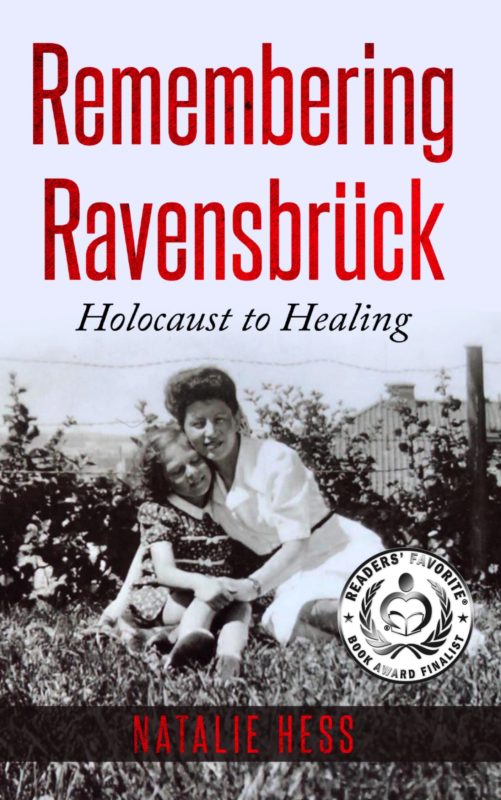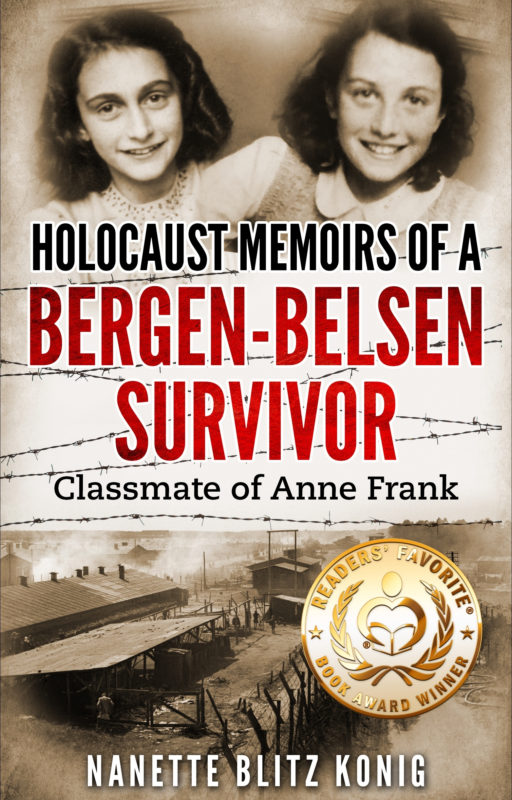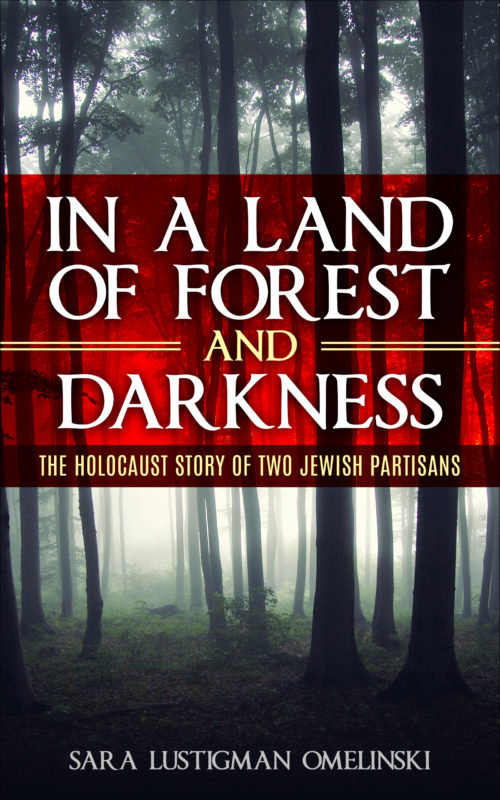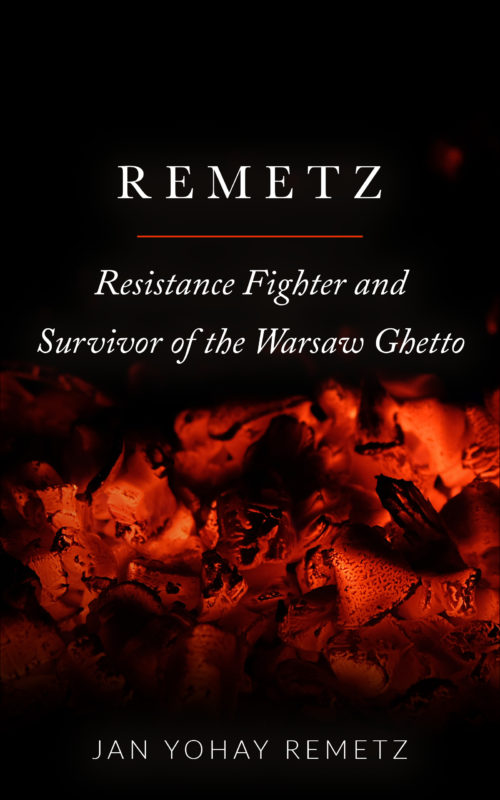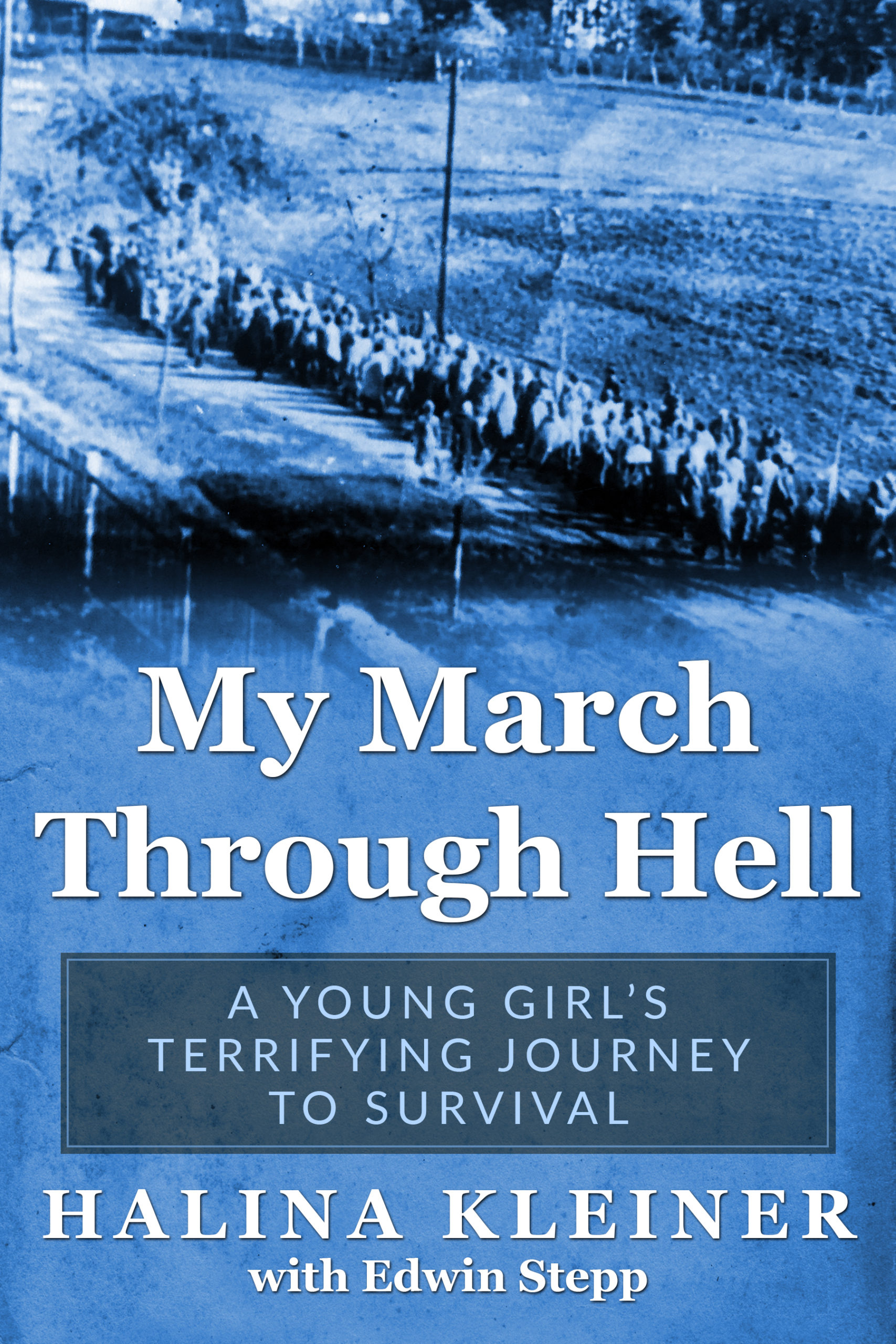Survivor of the Warshaw Ghetto.
Leokadia Schmidt, née Knobelman, was born September 1, 1914 in Warsaw. She was married on March 20, 1937 to Józef Bergman Schmidt, born in July 1909 in Stanisławów (in present-day Ukraine). Leokadia had a secondary school education with training for secretarial work. Following her marriage, she and her husband set up and ran a medium-sized workshop specializing in the manufacture of luxury women’s footwear. Up until the closing of the Warsaw ghetto in 1942 their shop at 57 Nowolipki Street employed both Polish and Jewish workers. The Schmidts led a comfortable middle-class existence, and could afford a full-time maid for their newly-born son, Kazimierz.
As the closing and destruction of the ghetto began, while officially residing at 76 Leszno Street on the grounds of the K.G. Schulz garment factory where her husband was employed in the cutting department, Leokadia hid with her infant son in the shuttered Flantzman lace factory at 10 Sochaczewska Street. Caught one day in a roundup orchestrated by factory owner K.G. Schulz, the family was marched along with hundreds of others to Warsaw’s Umschlagplatz (transfer depot) for transportation to the death camp at Treblinka. They managed to escape by bribing Jewish policemen and hiding in a nearby children’s hospital. While Leokadia’s husband was accepted back for work in the Schulz factory, Leokadia hid in an apartment belonging to employees of the Ursus automotive works at 40 Miła Street.
Following a brief reunion with her husband, Leokadia left the ghetto on September 2, 1942, after having smuggled her baby out with a Polish worker the day before. Her husband followed several days later. Under the name of Marta Piechocka, Leokadia initially hid with her baby for five weeks in Nowa Wieś near Wołomin. She was reunited with her husband in Warsaw with the help of the Michalski family with whom they had done business before the war. The Michalski cousin Father Edward Święcki helped place their son in the Father Boduen orphanage on Filtrowa Street.
After living for seven weeks in a war-damaged apartment on Krochmalna Street, Leokadia and her husband sought safer refuge in the loft of the Michalski’s father’s tinsmith shop on Belwederska Street. As she hid during the day in the loft writing her account of the destruction of the ghetto and their life in hiding on the “Aryan side,”, her husband directed the work of his underground shoe and slipper factory, employing mostly members of the Michalski family. Their product, sold on the black market through trusted pre-war distributors, found a ready market with the German occupiers, such goods being unavailable in their home country.
The Warsaw uprising of 1944 found the Schmidts still hiding in their cubby hole, which they now left to join the throngs of Warsaw citizens fleeing the burning city. For a period of time Leokadia and her husband parted company, and her husband joined the uprising. At one point he is forced to retreat to the center of town with the insurgents through miles and miles of sewers, nearly drowning and going blind from sewer gas in the process. Mrs. Schmidt finds herself in a transit camp in Opoczno, from where she is assigned to agricultural labor, digging potatoes and rutabagas in the tiny village of Janków.
After the Schmidts are eventually reunited in Grodzisk, they support themselves by selling cigarettes on the town square until one day they are recognized and forced to escape to Milanówek, where they now engage in smuggling sugar. Here too they are soon recognized and arrested by Gestapo agents and handed over to Polish military police with orders to execute them the very next morning. That same night, January 15, 1945, the town is over-run by the advancing Soviet army. The Germans have fled, and the Schmidts are set free.
After staying for a while with relatives in Żyrardów, a second son, Marian, was born on April 21, 1945. The Schmidts retrieved their older son Kazimierz from an orphanage near Zakopane in southern Poland, to which children had been evacuated during the Warsaw uprising, and took up residence in Kraków. Before that, Mr. Schmidt returned to Warsaw to retrieve his wife’s memoirs from beneath the ashes of the tinsmith’s shed where he had buried them deep below ground in a tin canister. Aside from the heel of one of Leokadia’s shoes, that was the only object from the shed to survive the Warsaw uprising.
Concluding that Poland, now under communism, was no place for Jews wanting to engage in private enterprise, the Schmidts decided to emigrate: first to Paris, and then to Caracas, Venezuela, where Mr. Schmidt ran a flourishing dry goods business. In retirement, the Schmidts moved to the United States, where both of their sons had been accepted at the University of California, Berkeley. Seeking a dry climate because of Leokadia’s rheumatoid arthritis, the Schmidts ended up settling in Phoenix, Arizona in 1967, residing at 3919 West Rancho Drive until their deaths—Joseph in 1980 and Leokadia in 1984. They are buried next to one another in the city’s Beth El cemetery.
Mrs. Schmidt was the only member of her immediate family to survive the war. Two daughters did not survive infancy. One of her sisters was shot along with her husband and little son in Poniatowa in 1943. A second sister stayed with the Schmidts until September 1942, when she was discovered in hiding and died while being deported to Treblinka, having gone insane. A third sister crossed over to the “Aryan side” of Warsaw and disappeared without a trace, as did a fourth sister. Her mother died before the war, and her father had been crushed and killed by a German truck on the corner of Nalewki and Gęsia Streets in 1940.
After finishing Berkeley with degrees in mathematics, the two Schmidt sons followed separate careers. Their older son, Kazimierz, now Kenneth, as of this writing lives in retirement with his wife Shelley in Cherry Hill, New Jersey, after a career as an IT specialist for many different corporations, including the Kraft Corporation and Amtrak. They have six children and sixteen grandchildren scattered about the globe. The Schmidts’ younger son Marian moved to Poland, where he received a degree from the National Film School in Łódź and went on to found the Warsaw School of Photography and Graphic Design, located not far from the site of the shed on Belwederska Street where his parents had survived, and where he himself had been conceived. Marian died unexpectedly in 2018 following heart surgery. He is survived by a son, Arthur, and his wife, the actress Marta Dutkiewicz-Schmidt. The two of them continue Marian’s work at the school Marian founded.
